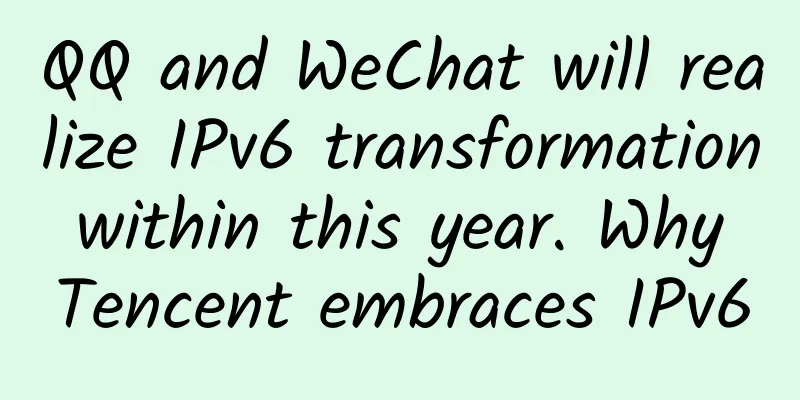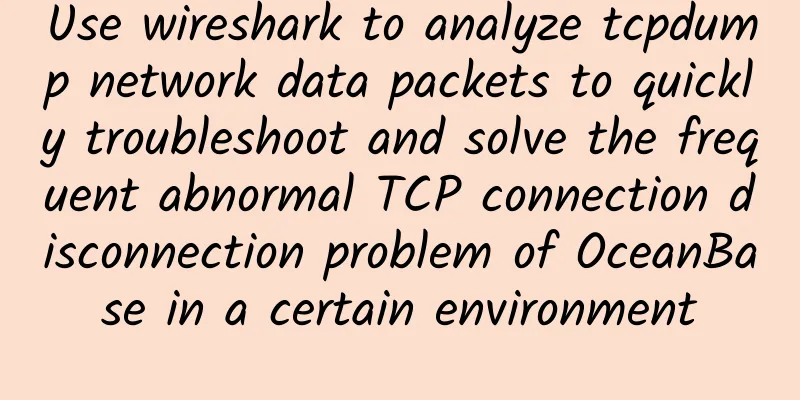A brief introduction to RPC services | Network protocols at different layers

|
Author: Wang Yuzhan JD Health Network ProtocolWhy do we need network protocols?A network protocol is a set of rules, standards or conventions established for data exchange in a computer network. In the network, a microcomputer user and a mainframe operator communicate. Since the two data terminals use different character sets, the commands entered by the operators are not recognized by each other. In order to communicate, it is stipulated that each terminal must first convert the characters in its own character set into characters of the standard character set before entering the network for transmission. After reaching the destination terminal, it is converted back to the characters of the terminal character set. Just like we speak in a certain language, there is also a language between the computers on the network, which is the network protocol. Different computers must use the same network protocol to communicate. Which protocols are required for a request?1. To transmit data, how do you first know the address of the corresponding machine? The specific machine can be confirmed through IP (IP layer protocol of the network layer). 2. After finding the target machine, you need to know which program on the machine accepts this request? The specific program (TCP layer protocol of the transport layer) can be determined through the port. 3. After the program is determined, how to distinguish different requests and how to associate each request with the corresponding response? (RPC protocol at the application layer) Distinguish through message ID. 4. All of the above are finally supported by the optical cables, electrical cables, wireless channels, etc. of the physical layer. How to control the transmission of signals above the physical layer also requires PPP protocol, ARP protocol, etc. Introduction to protocols at different layersApplication layer protocolsHTTPHypertext Transfer Protocol (HTTP) is a simple request-response protocol that usually runs on top of TCP. It specifies what messages a client may send to a server and what responses it may get. HTTPS protocolThe full name is Hyper Text Transfer Protocol over Secure Socket Layer. It is an HTTP channel with security as its goal. It ensures the security of the transmission process through transmission encryption and identity authentication based on HTTP. HTTPS adds SSL to HTTP. The security foundation of HTTPS is SSL, so the details of encryption require SSL. HTTPS has a different default port from HTTP and an encryption/authentication layer (between HTTP and TCP). This system provides authentication and encrypted communication methods. It is widely used in security-sensitive communications on the World Wide Web, such as transaction payments. RPC ProtocolA protocol for requesting services from a remote computer program over a network without requiring knowledge of the underlying network technology. RTMP protocolFull name: Real Time Messaging Protocol. This protocol is based on TCP and is a protocol family, including the RTMP basic protocol and multiple variants such as RTMPT/RTMPS/RTMPE. RTMP is a network protocol designed for real-time data communication. It is mainly used for audio, video and data communication between Flash/AIR platforms and streaming media/interactive servers that support the RTMP protocol. Software that supports this protocol includes Adobe Media Server/Ultrant Media Server/red5, etc. RTMP, like HTTP, belongs to the application layer of the TCP/IP four-layer model. P2P ProtocolPeer-to-peer technology, also known as peer-to-peer Internet technology, is a new network technology that relies on the computing power and bandwidth of participants in the network, rather than concentrating all the reliance on a few servers. P2P networks are usually used to connect nodes through Ad Hoc connections. This type of network can be used for a variety of purposes, and various file sharing software has been widely used. P2P technology is also used in data communications for real-time media services such as VoIP. DNS protocolDNS is a hierarchically distributed database system that can map domain names and IP addresses to each other. The DNS system responds to user queries by using recursive query requests, providing critical basic services for the operation of the Internet. Currently, most firewalls and networks will open DNS services, and DNS data packets will not be intercepted. Therefore, a covert channel can be established based on the DNS protocol, thereby successfully passing through the firewall and transmitting data between the client and the server. GTP ProtocolFull name: GPRS Tunneling Protocol (GPRSTunnelingProtocol), which can be decomposed into three independent protocols, GTP-C (control plane), GTP-U (user plane) and GTP' (billing transmission). GTP-C is used in the GPRS core network for signaling data between different network nodes. GTP-U is used to carry user data. GTP can be used on UDP or TCP, and GTP v1 is only used on UDP. Used in GPRS (2.5 generation communication technology), UMTS (3G mobile communication technology), LTE (transition between 3G and 4G technology) and 5G networks. DHCP protocolFull name: Dynamic Host Configuration Protocol, which is usually used in large local area network environments. Its main function is to centrally manage and allocate IP addresses, so that hosts in the network environment can dynamically obtain IP addresses, Gateway addresses, DNS server addresses and other information, and can improve the utilization rate of addresses. Other protocolsFTP, Gopher IMAP4, IRC, NNTP, XMPP, POP3, SIP, SMTP, SNMP, SSH, TELNET, RTCP, RTP, RTSP, SDP, SOAP, STUN, NTP, SSDP, BGP, etc. Transport layer protocolTCP Transmission Control ProtocolFull name: Transmission Control Protocol, is a connection-oriented, reliable, byte stream-based transport layer communication protocol. TCP is designed to adapt to the layered protocol hierarchy that supports multiple network applications. Pairs of processes in host computers connected to different but interconnected computer communication networks rely on TCP to provide reliable communication services. TCP assumes that it can obtain simple, possibly unreliable datagram services from lower-level protocols. In principle, TCP should be able to operate on a variety of communication systems from hard-wired connections to packet switching or circuit switching networks. Network layer protocolIP ProtocolIP refers to Internet Protocol, the abbreviation of Internet Protocol, which is the network layer protocol in the TCP/IP system. The purpose of designing IP is to improve the scalability of the network: first, to solve Internet problems and realize the interconnection of large-scale, heterogeneous networks; second, to separate the coupling relationship between top-level network applications and bottom-level network technologies to facilitate the independent development of the two. According to the end-to-end design principle, IP only provides a connectionless, unreliable, best-effort data packet transmission service for the host. Link layer protocolPPP protocolPoint to Point Protocol (PPP) provides a standard method for transmitting multi-protocol packets over point-to-point connections. PPP was originally designed to provide an encapsulation protocol for IP traffic transmission between two peer nodes. In the TCP-IP protocol suite, it is a data link layer protocol (layer 2 in the OSI model) used to synchronize modulated connections, replacing the original non-standard layer 2 protocol, SLIP. In addition to IP, PPP can also carry other protocols, including DECnet and Novell's Internet Packet Exchange Protocol (IPX). The relationship between each layer protocol The process of sending1. When the sender throws the user data to the RPC layer, the RPC protocol adds the user data (message body) to the RPC header and then throws it to the next layer "transport layer" 2. After the "transport layer" receives the data from the "application layer", it will not consider what the previous protocol was. It will take the entire incoming data as the 'message body', add the TCP header and continue to throw it to the next layer "network layer". 3. After receiving the data, the "network layer" will not consider what the previous protocol was. It will take the entire incoming data as the 'message body' and add the IP header, and continue to throw it to the next layer "data link layer". 4. The "data link layer" also adds a MAC header, and finally the physical layer transmits it to the receiving end via optical and electrical signals. Process on the receiving end1. After the receiving end receives the data, the "data link layer" begins to parse it, identifies the Ethernet header, takes out the data and throws it up to the "network layer". 2. After the "network layer" recognizes the IP header, it takes out the data and passes it up to the "transport layer". 3. After receiving the data, the "transport layer" identifies the TCP header, takes out the data and continues to pass it up to the "application layer". 4. The "application layer" identifies the RPC protocol header and finally retrieves the user data from the sender. Design of each layer protocolTCPPurpose of designIn the process of network development, IP protocol provides data transmission between connected hosts. However, IP protocol cannot let the host receiving information know which process to send the data from a distant place. TCP (Transmission Control Protocol) is a protocol developed to solve the communication problem between processes. 1. Source port number and destination port number: Without these two port numbers, the data will not know which application it should be sent to. 2. Package serial number: Why do we need to number packages? To solve the problem of disorder. If we don’t number them, how can we determine which one should come first and which one should come later? 3. Confirmation of sequence number: The sent packet should be confirmed, otherwise how can I know whether the other party has received it? If it has not been received, it should be resent until it is delivered. This can solve the problem of no packet loss. 4. Status bit: SYN is to initiate a connection, ACK is a reply, RST is to reconnect, FIN is to end the connection, etc. TCP is connection-oriented, so both parties need to maintain the status of the connection. The sending of these packets with status bits will cause the status of both parties to change. 5. Window size: TCP needs to do flow control. Both parties in communication declare a window to indicate their current processing capacity. If the data is sent too fast, it cannot be processed. If the data is sent too slowly, there will be idle time. The window size is used to achieve an optimal processing level. |
<<: Design and implement a TCP protocol semi-connected port scanner
>>: An article explains the principles of Docker network
Recommend
HostYun Mid-Autumn Festival 12% off: Korean VPS monthly payment starts from 15.8 yuan, Hong Kong VPS monthly payment starts from 17.6 yuan
HostYun has launched a promotion during the Mid-A...
Teach you how to solve the WiFi coverage problem in various apartment types
Weekend nights are all about having fun! Playing ...
spinservers US servers start at 33% off, 100M unlimited traffic servers start at $69/month, 10Gbps bandwidth servers start at $139/month
spinservers has sent the latest 2023 US Labor Day...
Four trends to watch out for in 2018
Even with all the coffee or energy drinks in the ...
Interview question: What happens when you enter a URL in the browser and press Enter?
The overall flow chart is as follows: 1. URL pars...
Is it OK to leave the router on for a long time? Is there any harm if I don't turn it off?
Some people say that WIFI is the vitamin of the I...
5G is not yet popular, but 6G is coming: Tsinghua University experimented with 6G at the end of last year, led by the vice president
Domestic 5G construction is still in full swing, ...
[Black Friday] Friendhosting 40% off, 13 data center VPS monthly payment starts from 1.8 euros
Friendhosting released this year's Black Frid...
How to design a distributed ID generator?
Hello everyone, I am Brother Shu. In complex dist...
What the three major operators fear the most has come, and packages say goodbye to the "routine" era!
With the continuous development of science and te...
Five hybrid video conferencing tips for effective collaboration
[[417444]] When Pixoul, a Dallas-based web design...
RackNerd: AMD Ryzen series KVM adds Seattle data center, starting at $14.18 per year
RackNerd has previously launched AMD Ryzen CPU+NV...
Ruizhi Big Data: Injecting Intelligent Genes into Dual-State IT
In the summer of 2019, a set of data about China&...
TMThosting: Seattle high-security VPS monthly payment starts at $3.16, 20% off, supports Alipay
TMThosting is a foreign hosting company establish...
The "highest academic degree dialogue" in the history of Huawei Cloud City Summit, doctors in four major fields talked about how to make scientific research benefit society
With the popularization of emerging technologies ...









